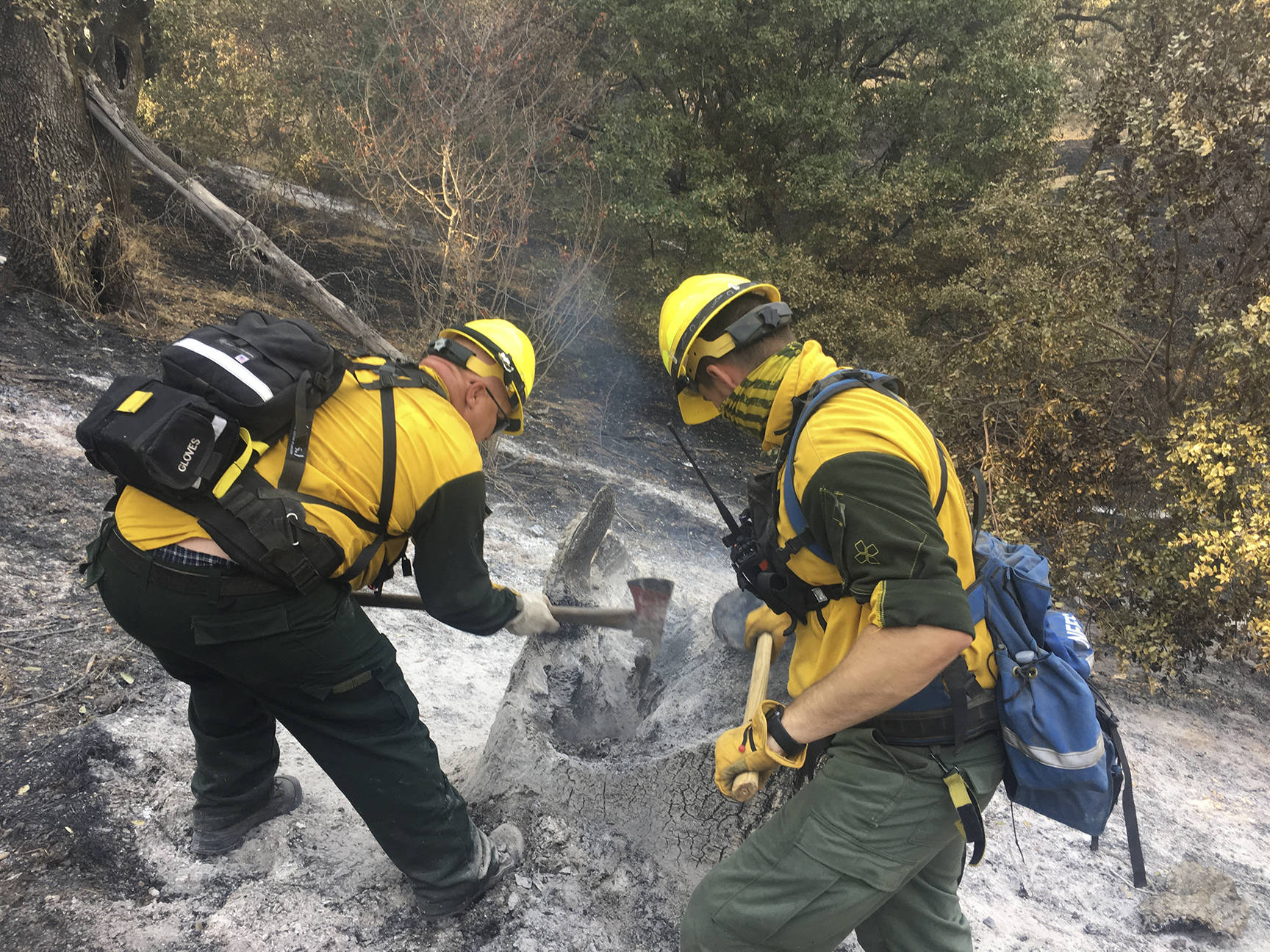ARLINGTON – Firefighters from Arlington and Fire District 22-Getchell have returned from battling wildfires still ravaging parts of Northern California.
A 21-member strike team from Snohomish County fire districts helped contain dozens of deadly infernos in the vast Napa Valley region that have already left 240,000 acres scorched, 42 people dead, 69 people still missing and 3,500 structures decimated.
Strike Team 3 left the county Oct. 13 to join crews already stretched to their limits battling blazes, and returned a week later, exhausted after their 24-hour rotating shifts.
“There was definitely a lot of loss and tragedy down there,” Arlington Capt. Cary Stuart said. “Areas where we responded were mostly black, and where there had been structures, all that was left was a patio, a pool, a chimney and a foundation.”
Strike Team Leader and Getchell Fire Chief Travis Hots said, “It was sad, seeing all their hopes and dreams have gone up in smoke there. There was a significant amount of devastation, like an atom bomb went off. Complete neighborhoods were leveled, and fire burned through like a blow torch.”
Hots said heat was so extreme, aluminum wheels on cars turned to puddles of molten metal that flowed down driveways.
This was the first time the firefighters have responded to wildfires in California, said Stuart, although Getchell responded to a couple of other out-of-state calls over the summer.
Crews were first assigned to protect structures on the east side of the Nuns Fire in Sonoma County. Fire was backing down the steep hillside and threatened several houses. For 24 hours, crews dug fire line to cut off flames, put out fires burning through brush and grass, and patrolled the area for more threats, Arlington city spokeswoman Kristen Banfield reported.
Next the crews were assigned to the west side of the Atlas Fire in Napa County. They hit hot spots that remained in residential areas from eight days earlier; tree stumps and roots still smoldered in places. The area saw massive structural devastation, and left a gray ash, blackish lunar-like landscape reminiscent of the aftermath of the Mount St. Helens eruption.
The crew’s final assignment was to patrol the east side of the Atlas Fire looking for hot spots. Banfield reported that the area was much cooler, and only a handful of spots were extinguished over their 24-hour assignment.
Firefighters slept in air-conditioned yurts when they weren’t out on the fire lines.
Stuart said the gratitude the crews received from citizens and local first responders was heartwarming.
“When people found out where our crews are from they couldn’t believe that we traveled all the way from Washington state to give them a hand,” Stuart said. “Whenever we came into contact with citizens there they said, ‘Thank you for coming,’ while others waved out their windows or honked their horns in thanks.”
Hots said when he and a fellow Getchell firefighter went into a barbershop on their day off, “The barber absolutely would not take our money. I kept trying to pay, but he was getting offended.”
The wildfires are California’s deadliest on record, surpassing the Griffith Park fire of 1933 in Los Angeles, which had 29 deaths.
Stuart said, “It was an honor and privilege to assist the people of California during this incomprehensible disaster”
He added that he was grateful for the administration’s support at home, and the full-time firefighters in the 27-member department that backfilled while the Arlington foursome were out of state.
The mutual aid and appreciation runs both directions on I-5. California firefighters drove to Washington in 2015 to assist crews during a catastrophic year of wildfires, rivaled only by this year’s season, the driest summer on record.
Due to record-setting dry conditions around the Pacific Northwest, it was a busier-than-usual summer for Arlington Fire and Engine #46. The brush truck and crew saw action in Eastern Washington, including the Canyon Creek Fire in Winthrop, and the Jolly Mountain and Uno Peak Fires in Kittitas County.
Closer to home, the crew last month responded to a five-acre fire in the Arlington Heights area. For such a small area, the unsolved blaze that briefly evacuated 25 homes generated an inordinate amount of fire and smoke.
“Arlington Heights was the biggest grass and brush fire I have seen around here in ten years,” Stuart said.



